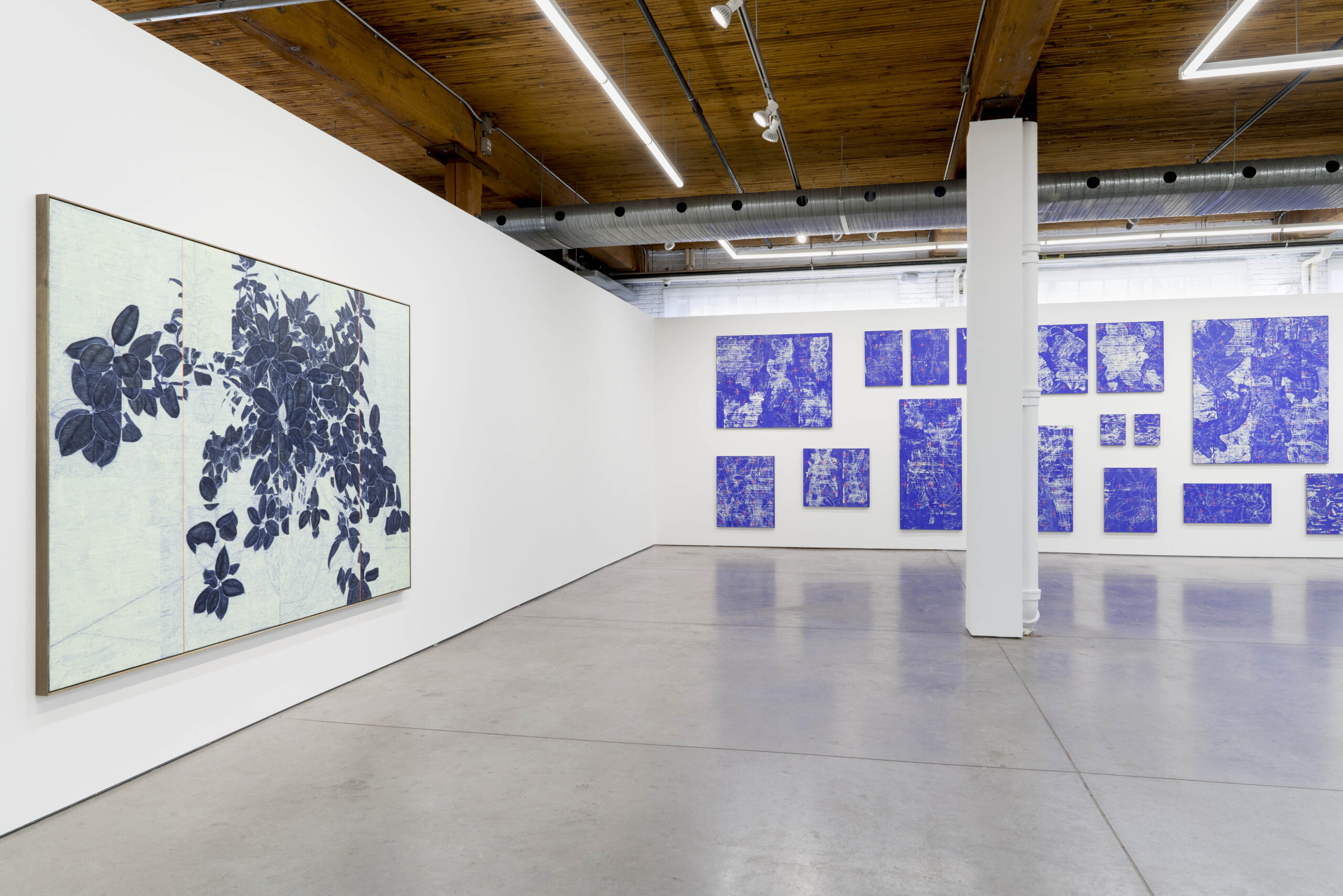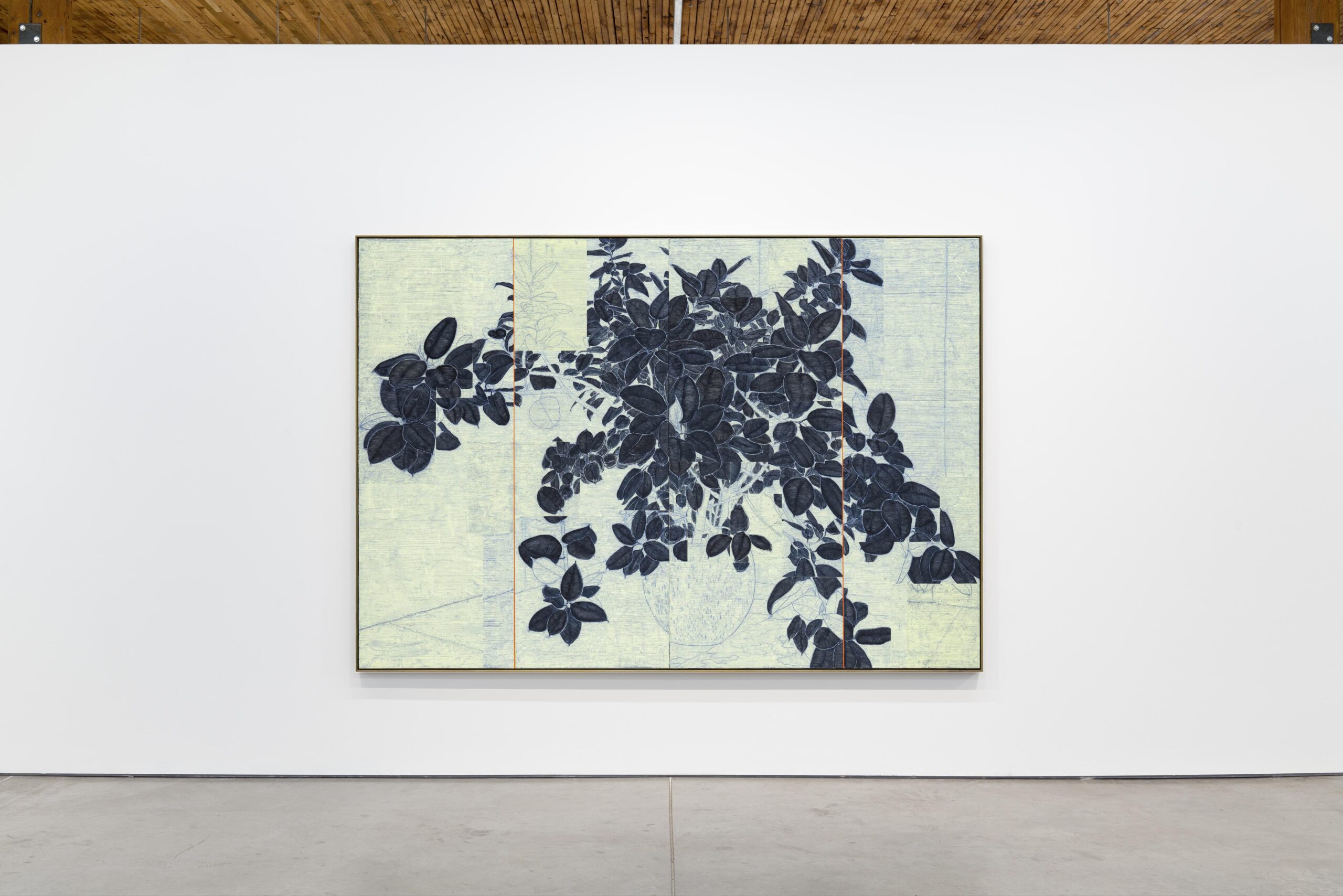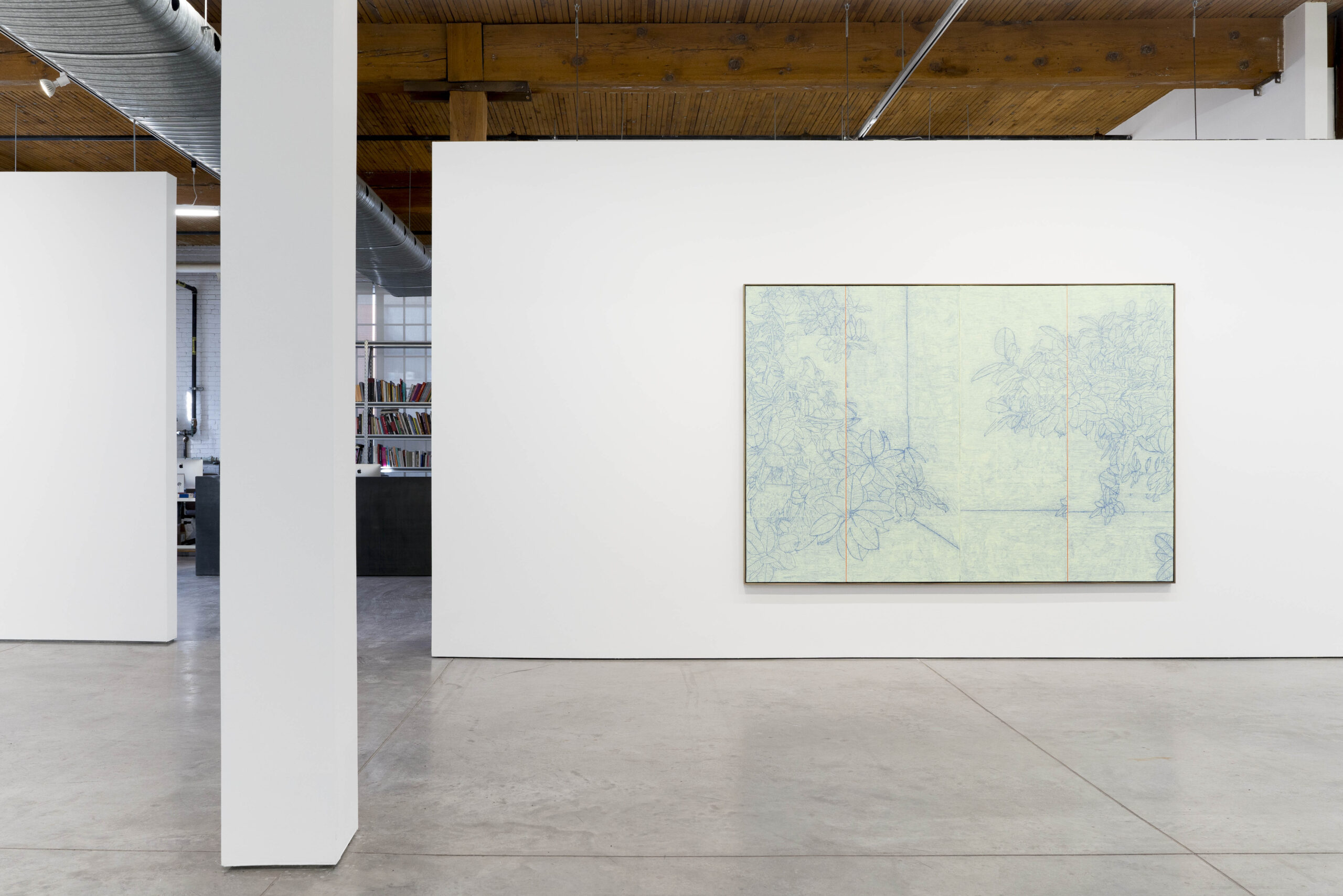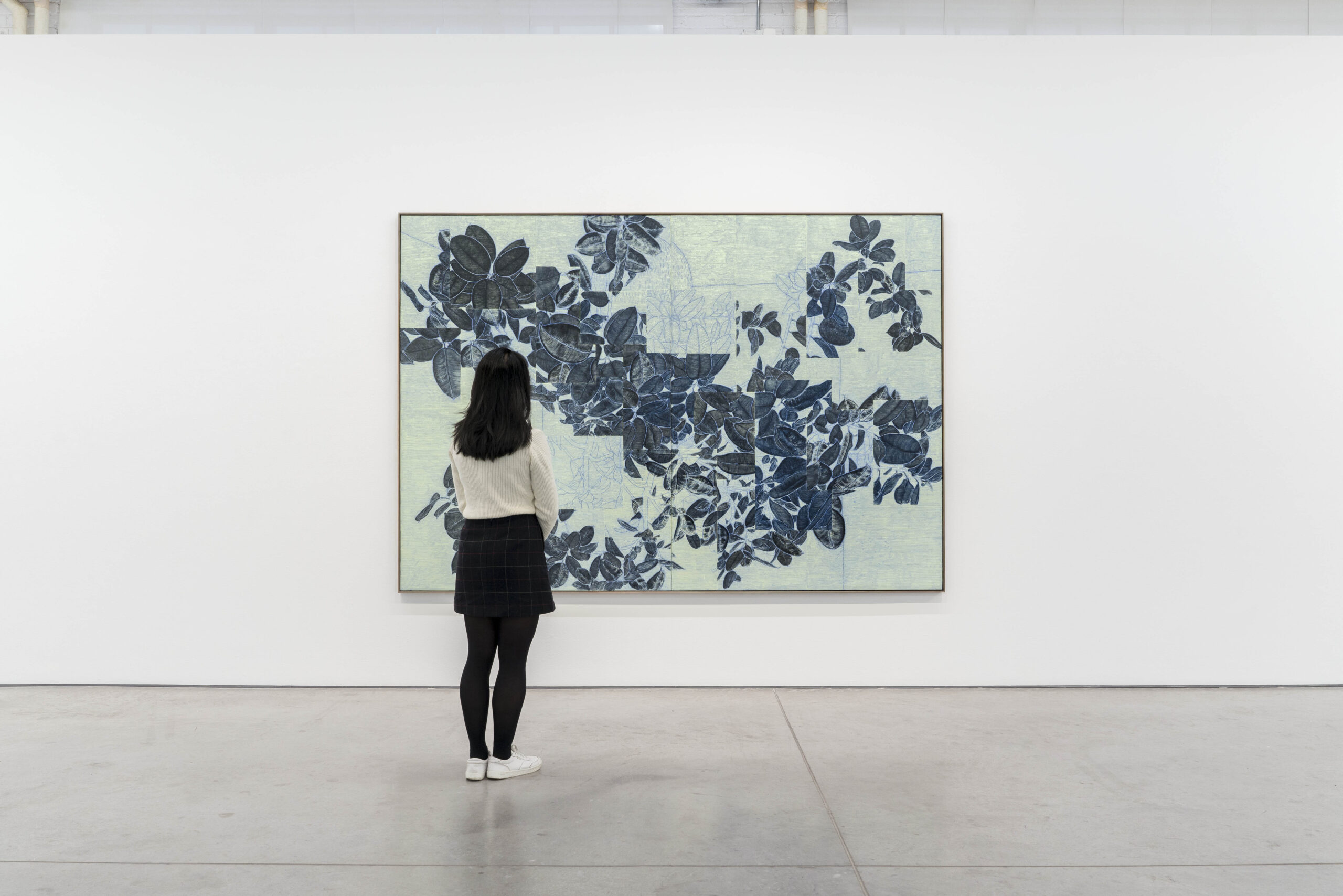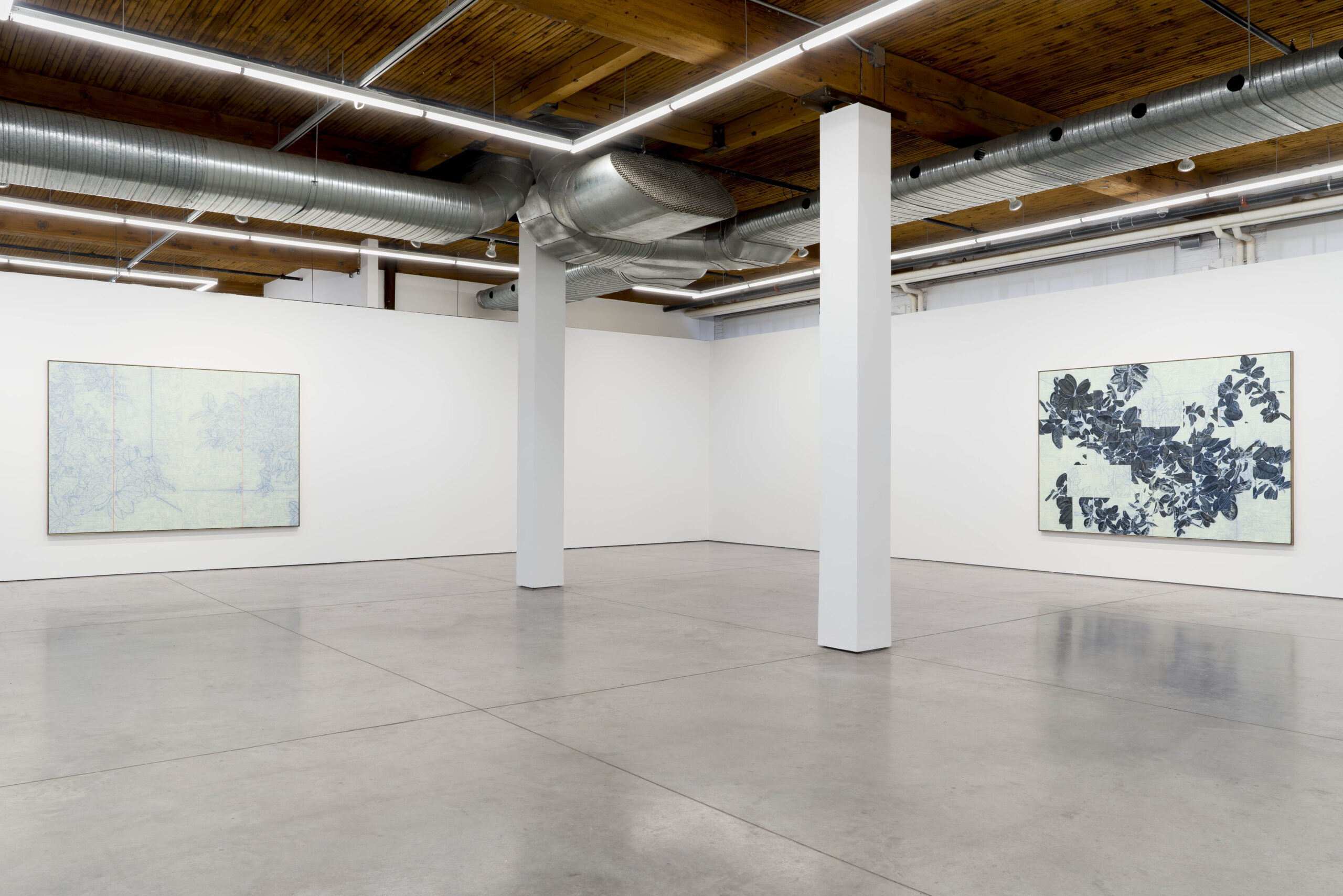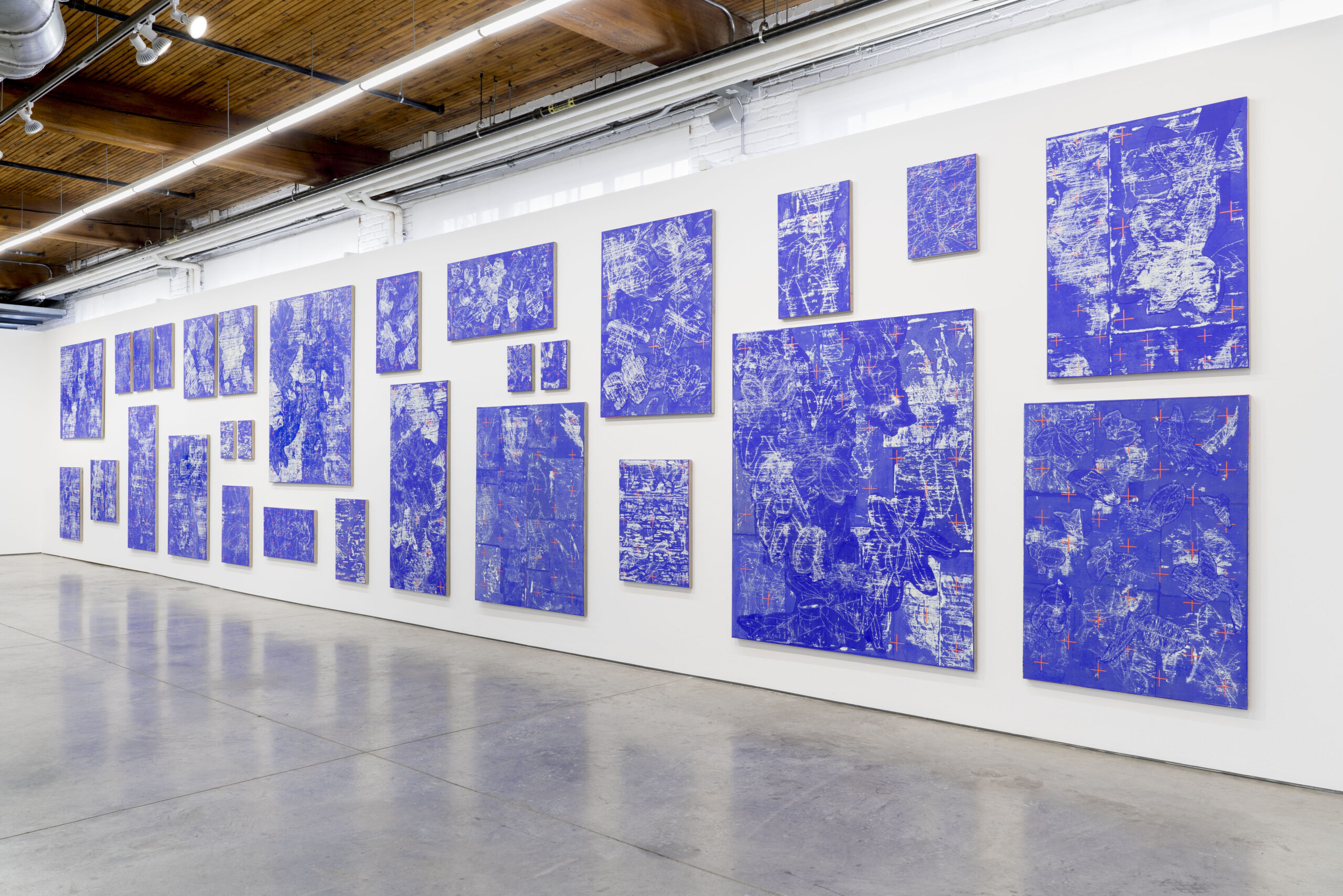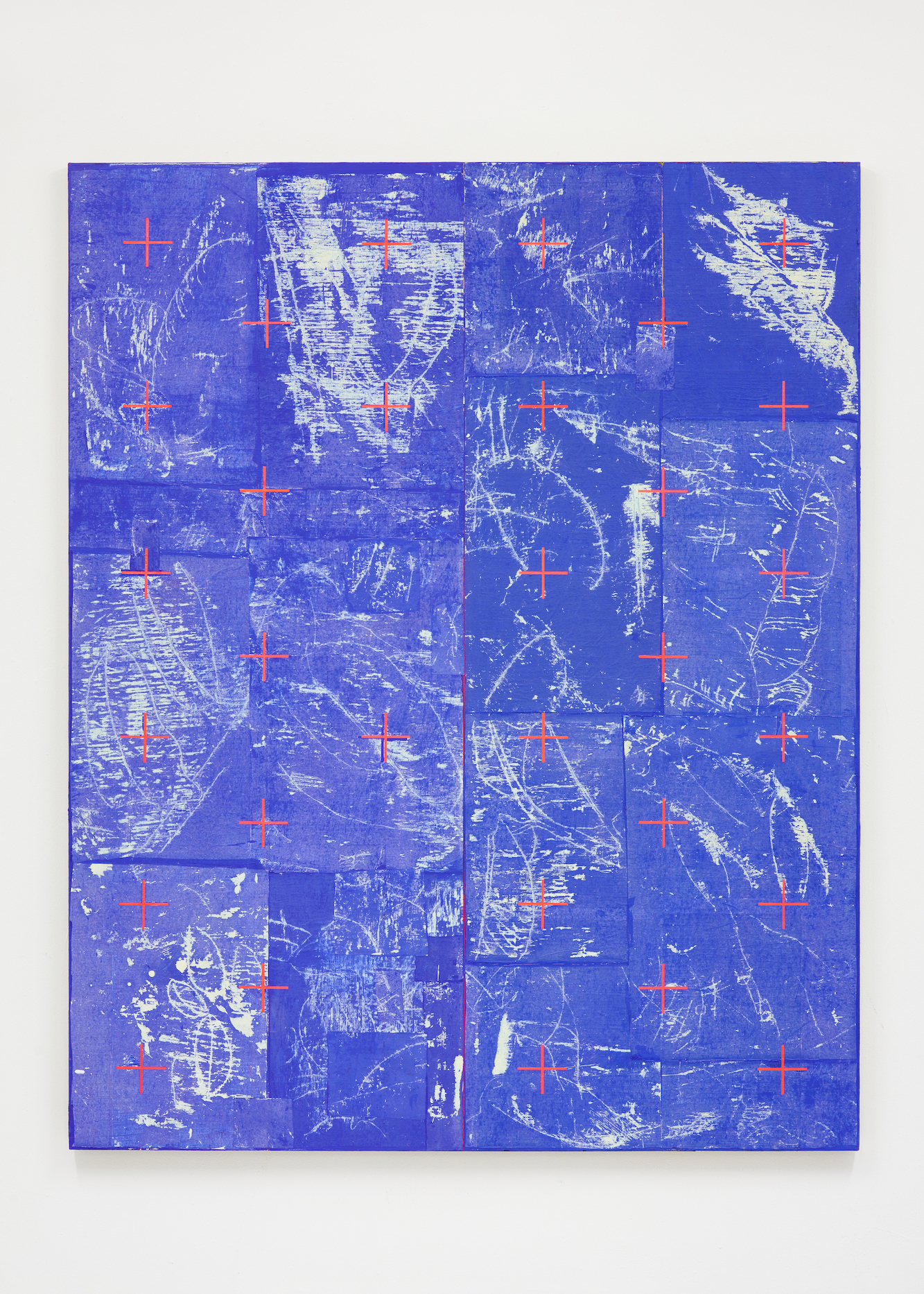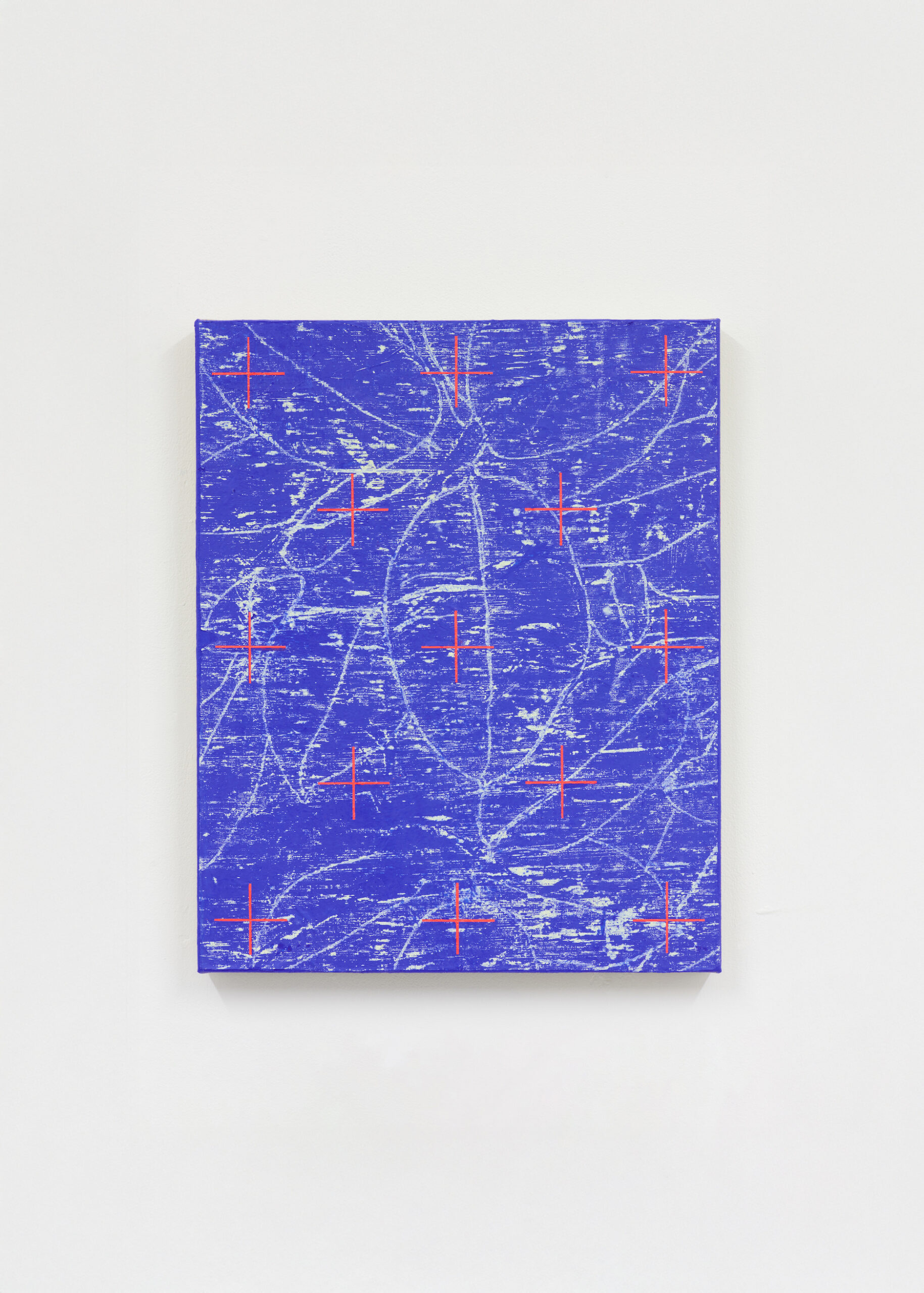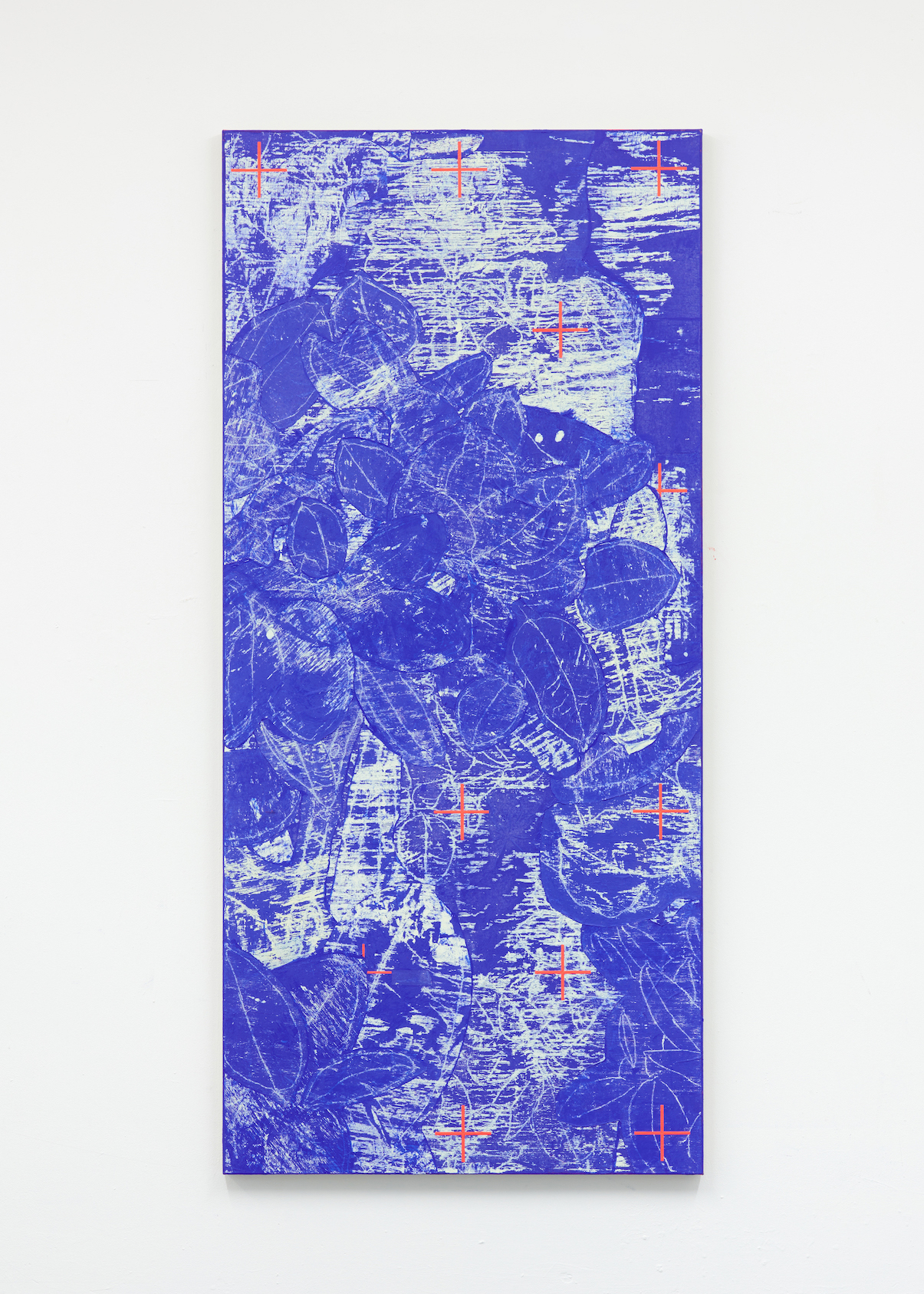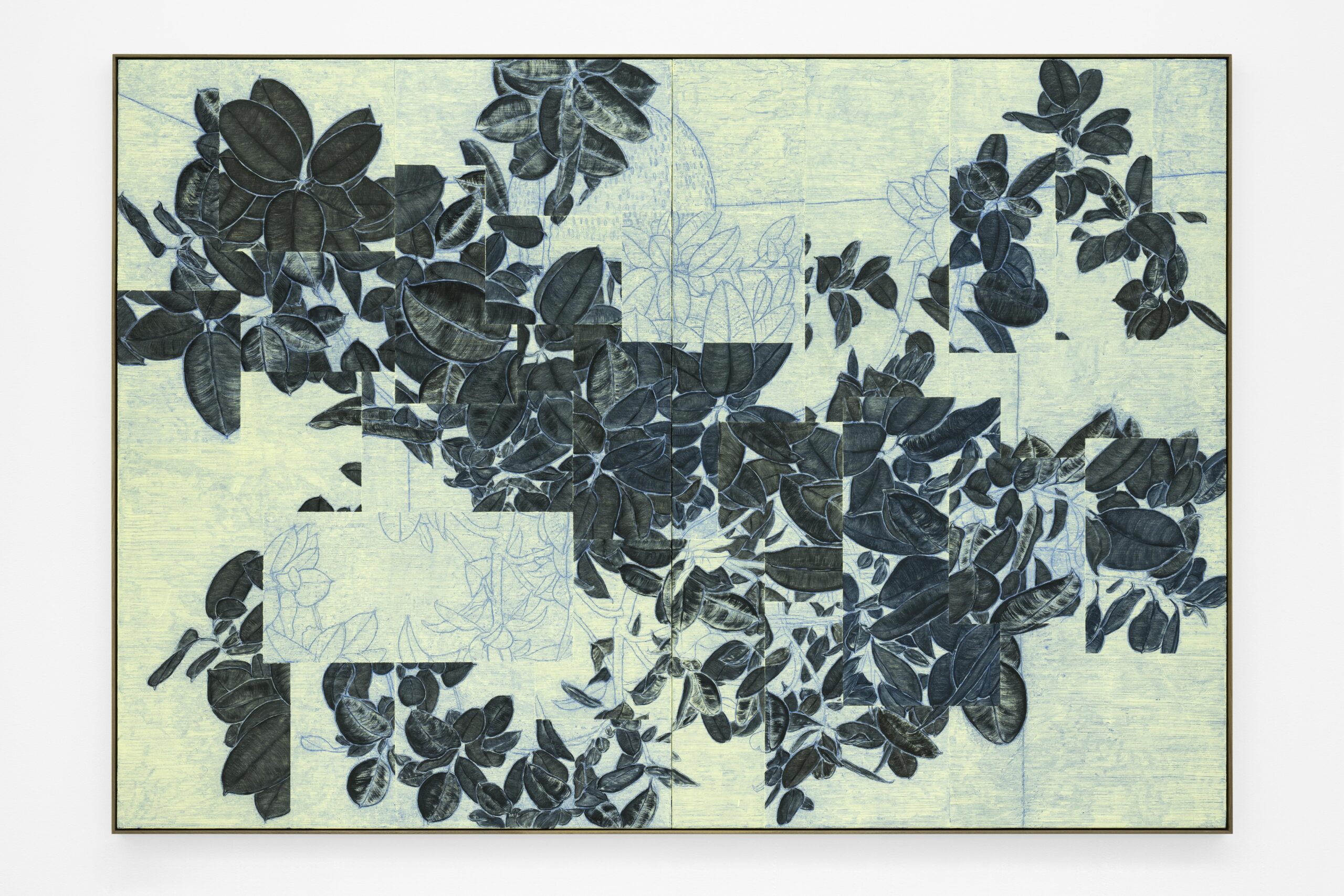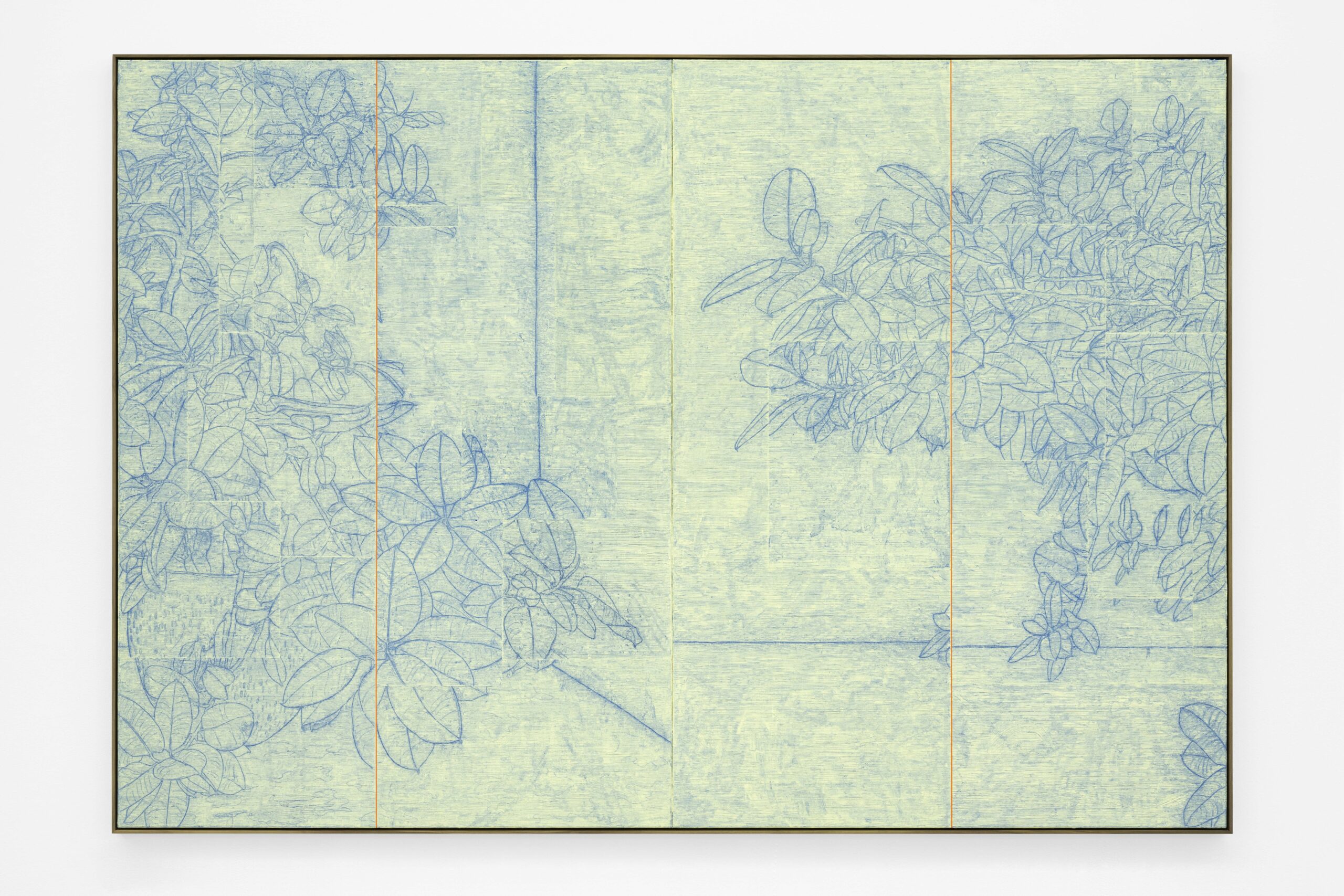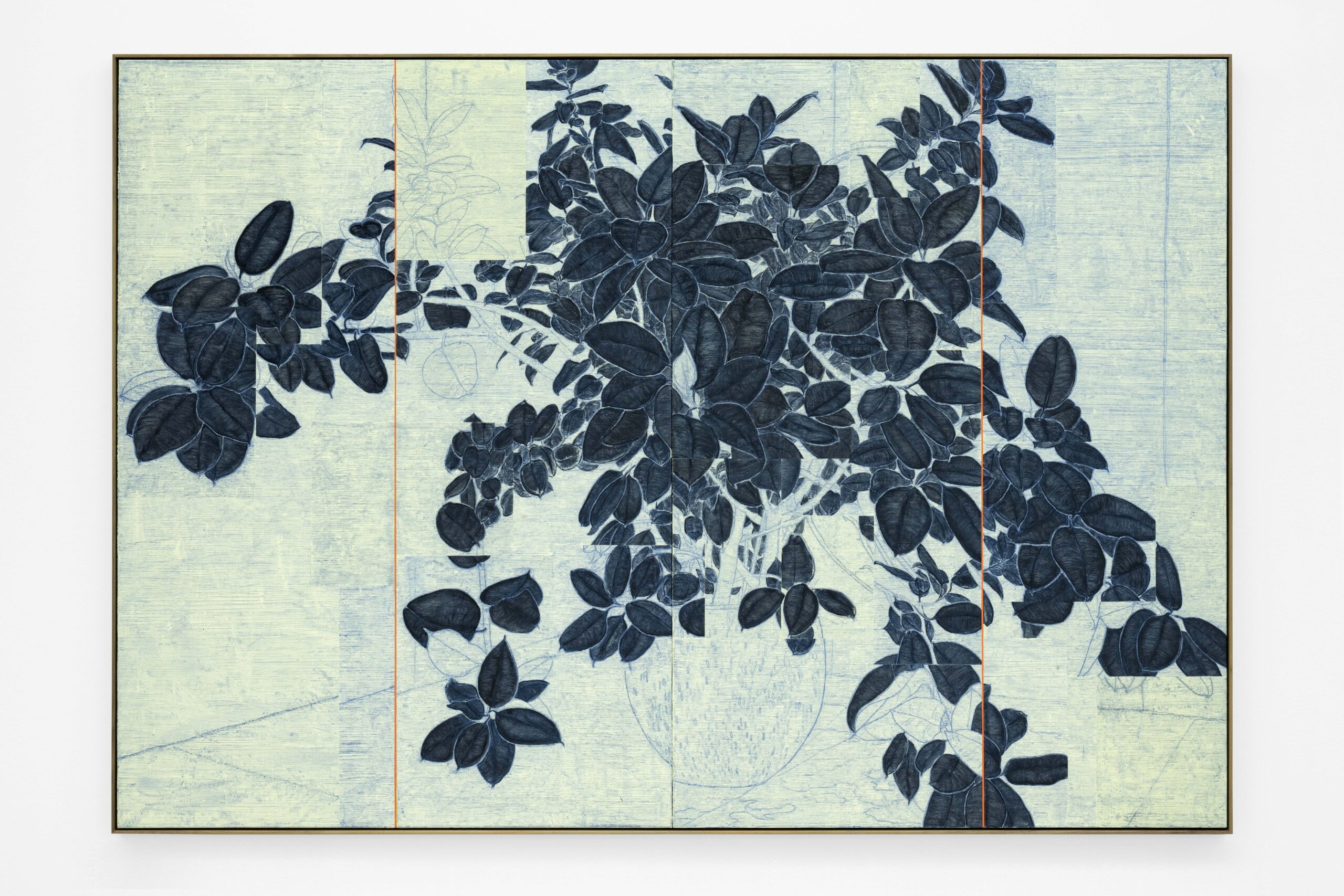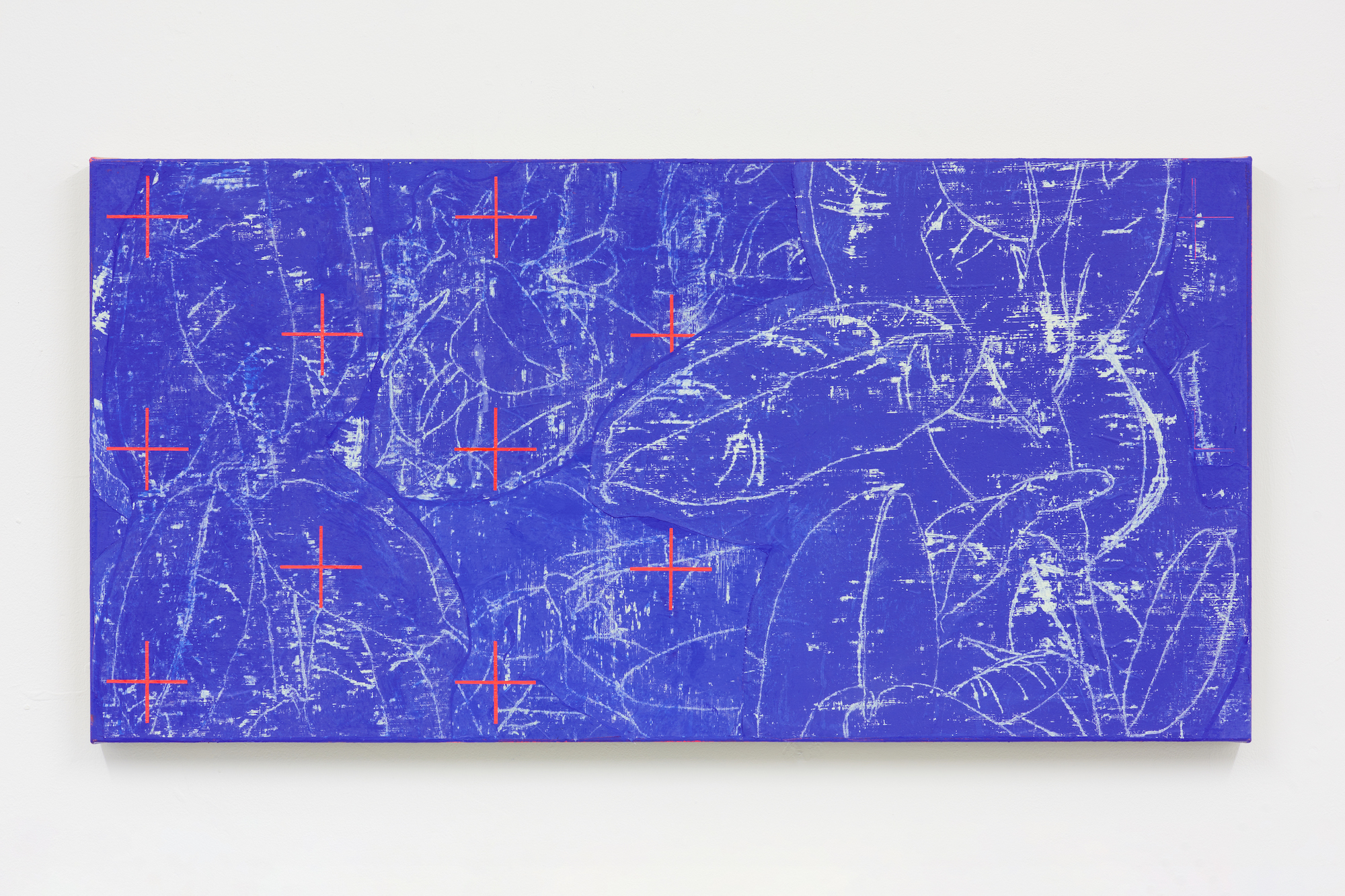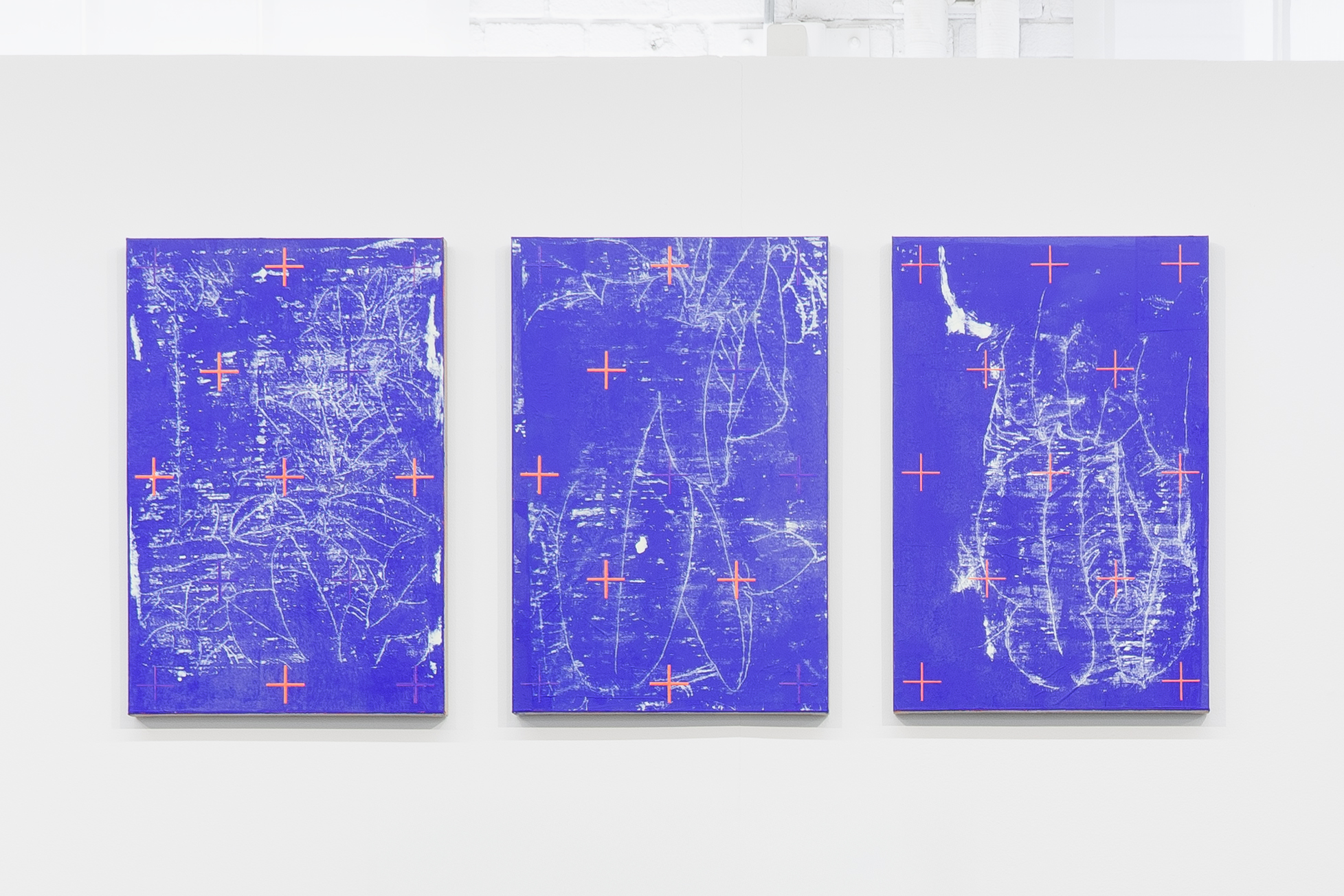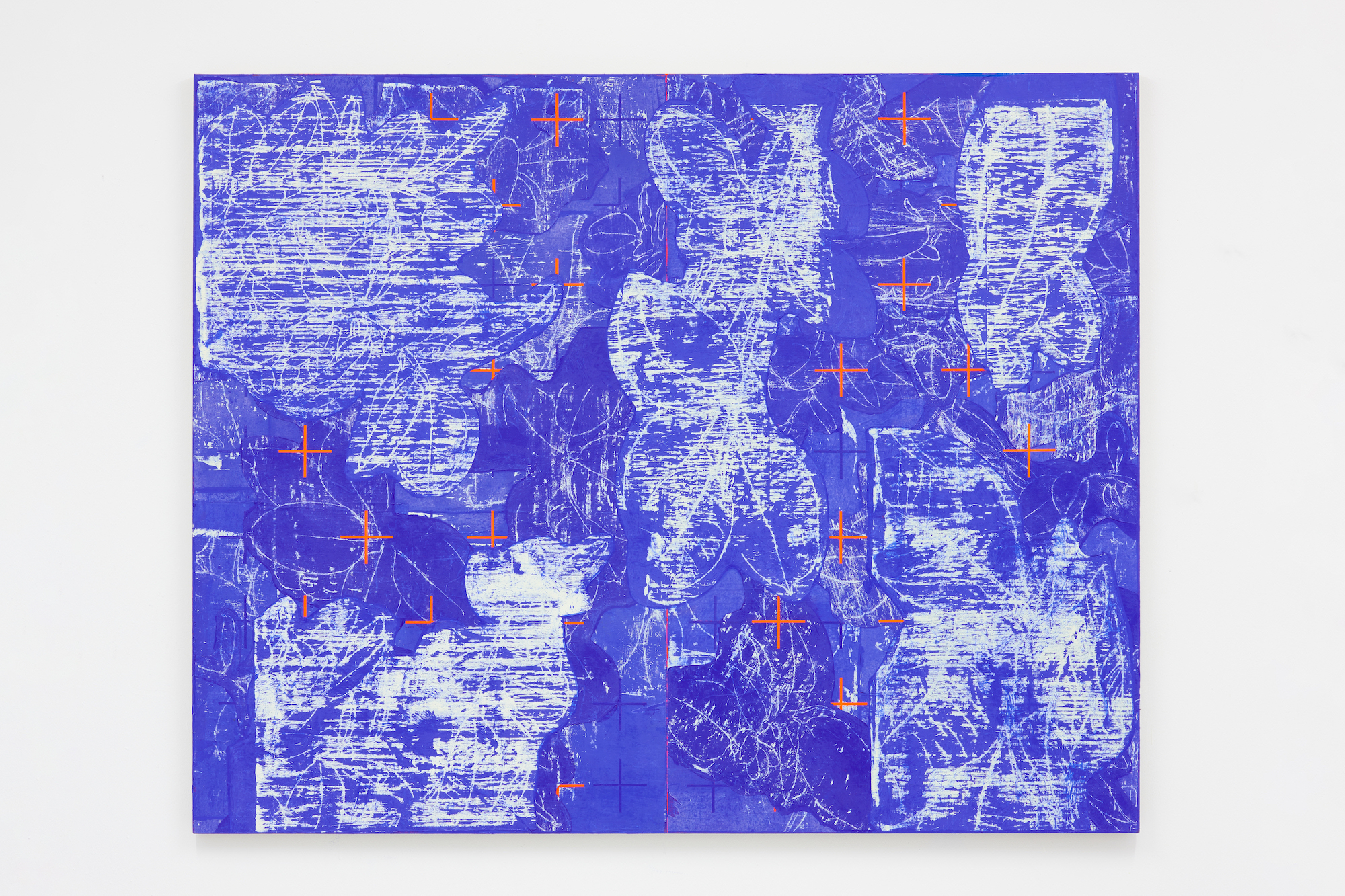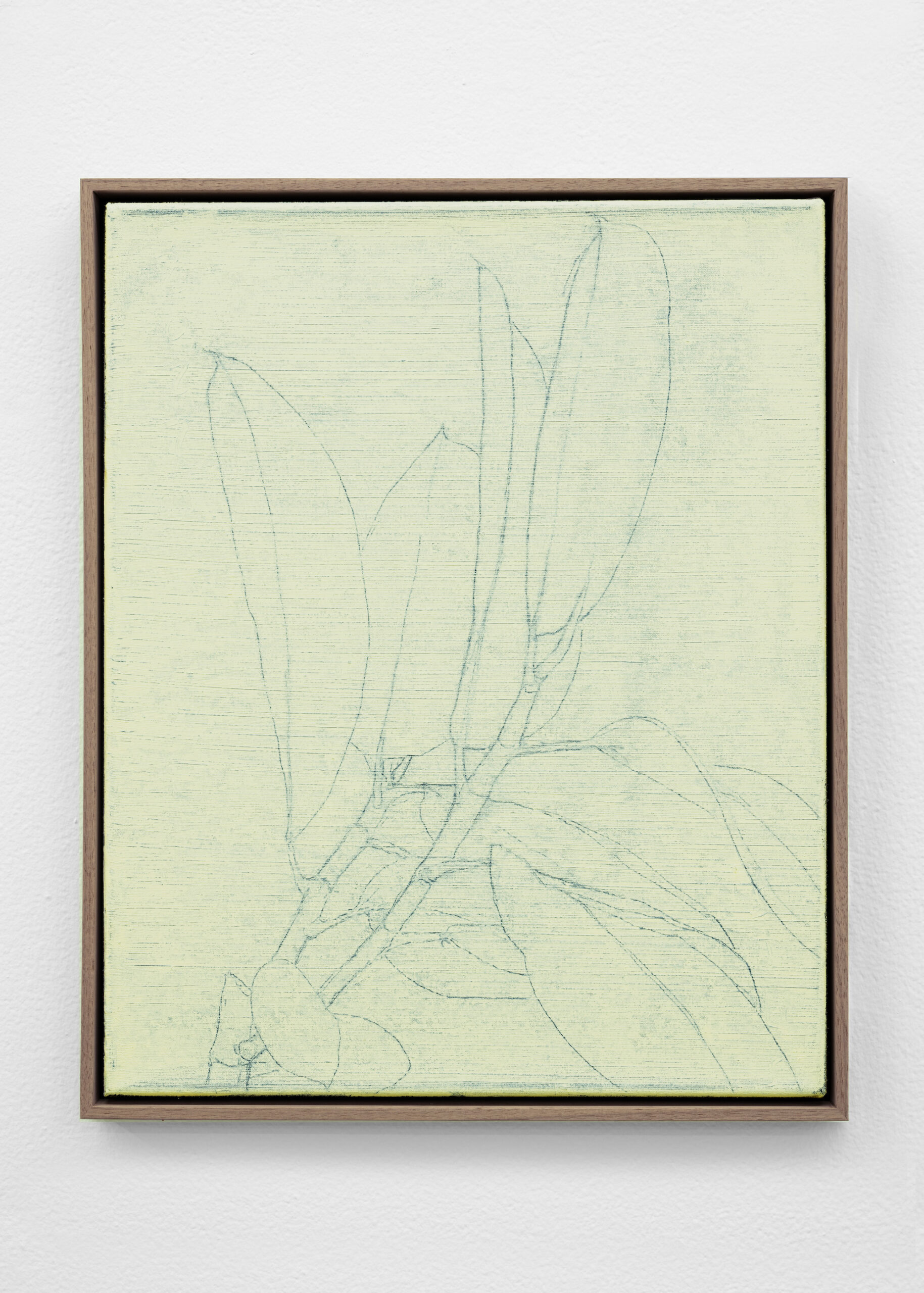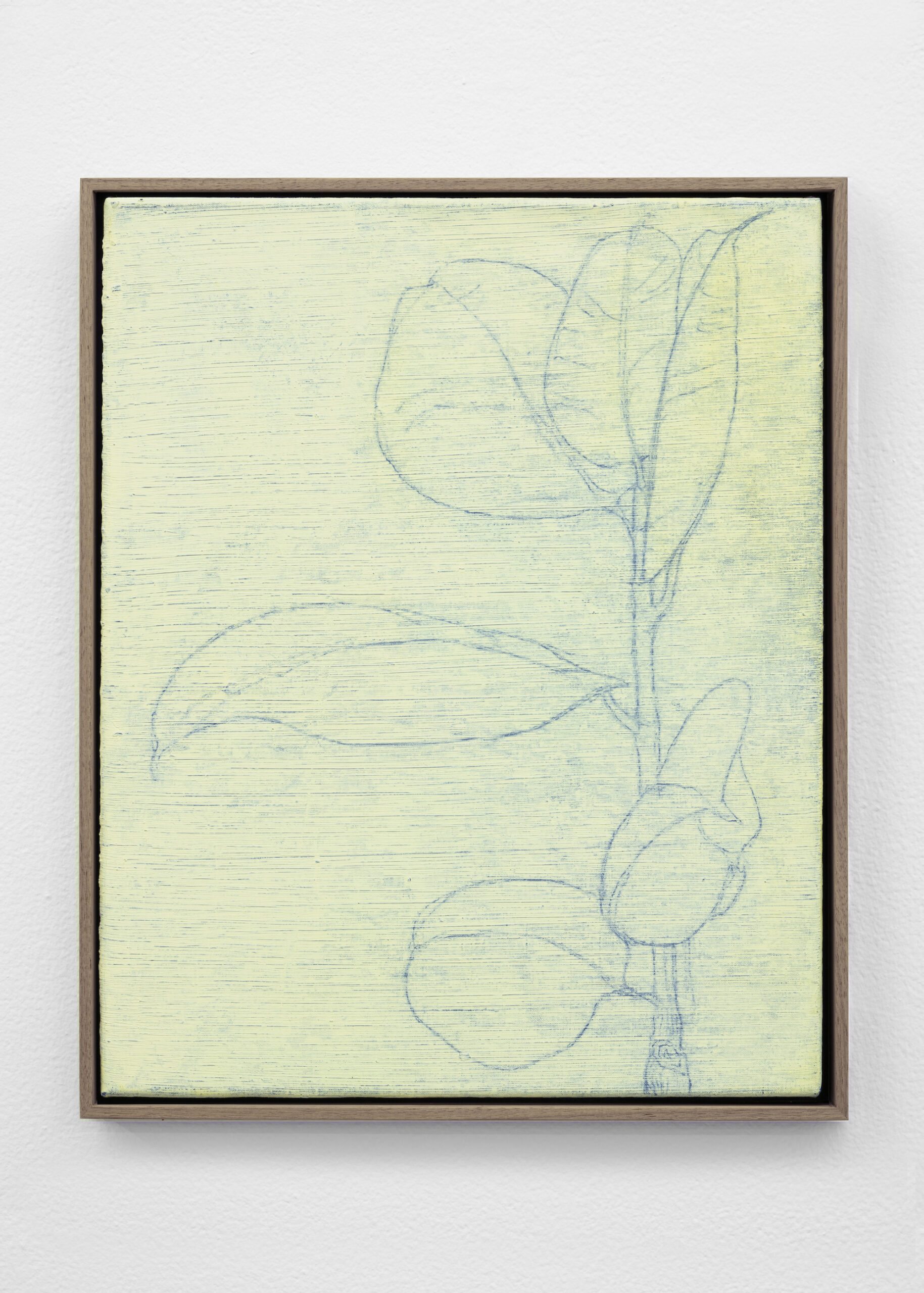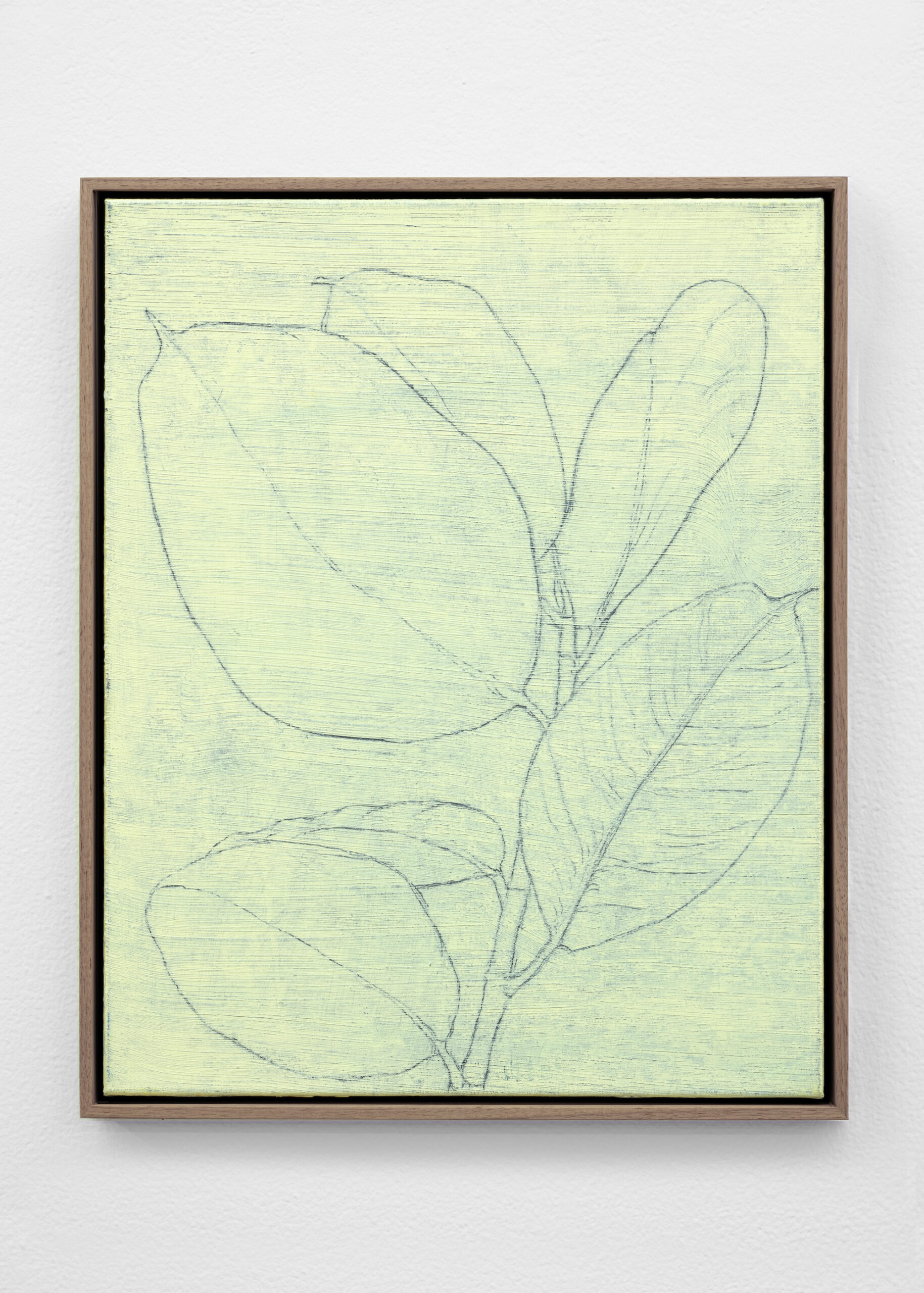Les Rapports
January 18th – March 9th 2024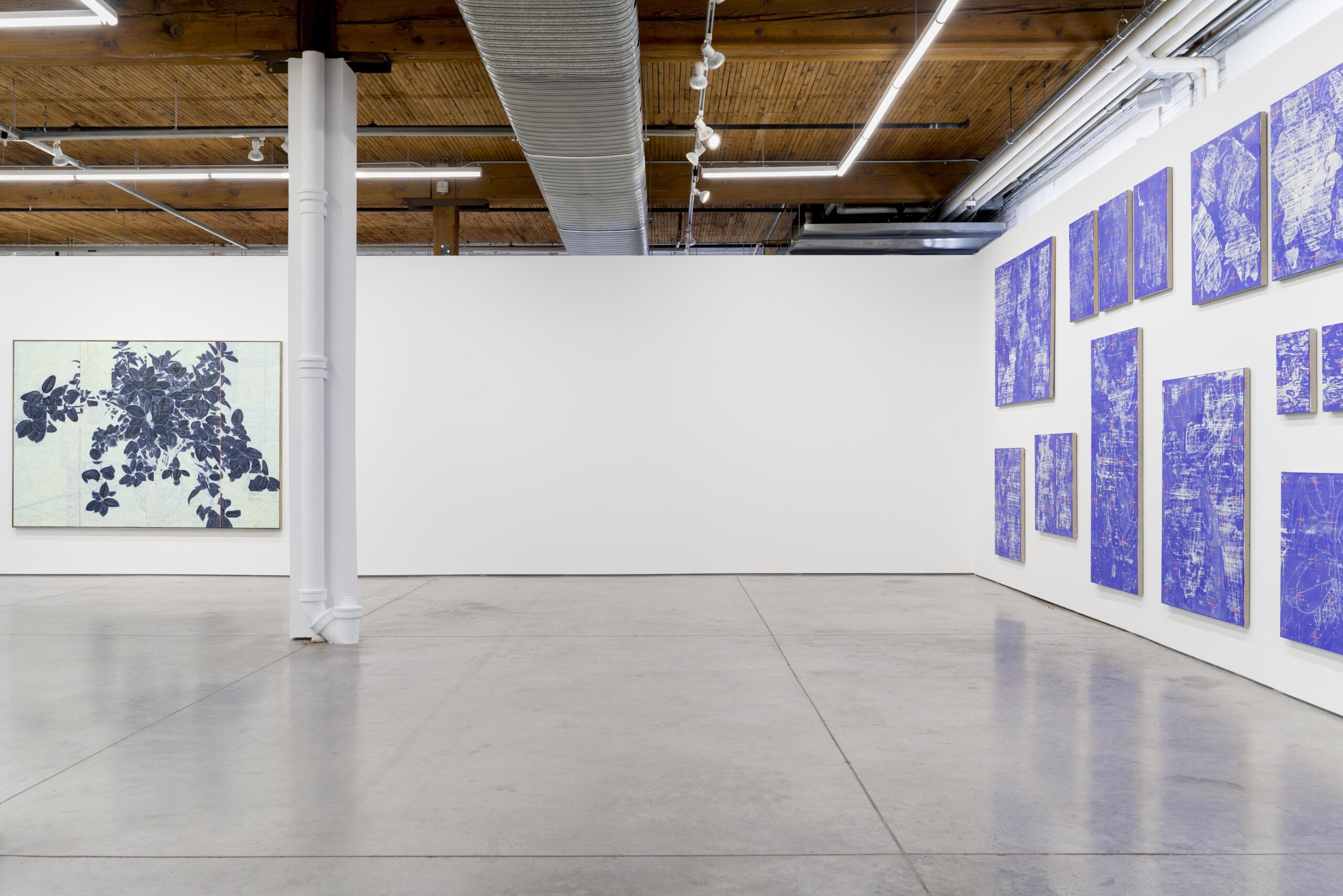
January 18 – March 9, 2024
Bradley Ertaskiran is pleased to present Shaan Syed’s exhibition Les Rapports, a new body of paintings centered on the motif of the rubber plant. In both their making and content, Syed’s artworks highlight the trajectories and lingering relationships between things and their material pasts, spanning East and West.
Les Rapports centers on three large double-panel paintings and a salon hang of over twenty works on linen. Syed’s process begins with an undercoat of thick blue oil paint dragged across the painting, structuring the surface and composition, similar to the foundational warp and weft of a textile. Working on a freshly wet surface, Syed uses a transfer technique called “tonking”—a method championed by Henry Tonks at the Slade School of Art at the beginning of the 20th century—consisting of layering paper to remove paint and create texture. The imbibed sheets are then applied to a new canvas, revealing blue and white imprints and fragmented flora taken from their parent. The second-generation paintings maintain their relationship or rapport with their originals even after their separation; they are connected through material traces, and neither exists without the other.
Similar to Syed’s repeated geometric forms in past work, here the rubber plant acts as a patterning tool, an organic arabesque that breaks up an otherwise structured composition. Clusters of large leaves, some mere outlines, others filled in with deep variations of black, are broken into vignettes across the canvas. Some artworks also contain red vertical seams or registration marks that bifurcate the painting, drawing attention to the artwork’s collaged elements but also recalling the harsh score of a surveillance laser, used to capture or scan data. Panels are reversed or the image appears upside down, breaking the plant down further, challenging the rendering of objects and real space. This focus on division and dissection is common in Syed’s practice and references the binary tension between East and West of his upbringing, as a child of an English Protestant mother and a Pakistani Muslim father who fled India during Partition.
In turn, Syed’s research interests and personal history span borders and time. Syed’s blue and white palette, for example, recalls historical commodities like porcelain, indigo, or Lapis lazuli, while his thin linework resembles the inlaid decorative filigree adorning brass and copper ornaments that filled his childhood home. The rubber plant, or Ficus Elastica, is also rooted in a history of colonial botany; originating in Southeast Asia as a commercial crop, the plant eventually reached the West Indies, South America, and other pantropical regions in tandem with trade routes established by European empires. Today, its meaning has been rendered benign as a clichéd fixture in mid-century home decor. Within Syed’s artworks, another layer is added to the rubber plant’s trajectory; the paintings are based on photos the artist took of a plant found in the lobby of the Kunstmuseum Basel, Switzerland, a world-renowned art museum situated in a city at the epicenter of the art world, known for its yearly circulation of goods and artworks. Syed relishes in these multiplicities of meaning attributed to the lingering connections between things, people, and artworks, old and new.
A conversation between Shaan Syed and Stephen Andrews in which the two artists delve into the themes and questions raised by Les Rapports will be published as a booklet available at the gallery.
To consult the artist’s profile, please click here.
